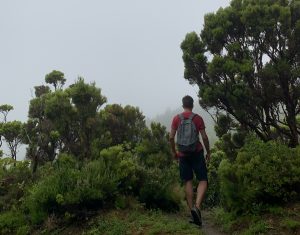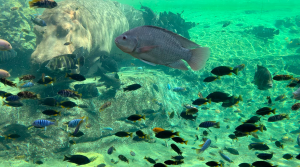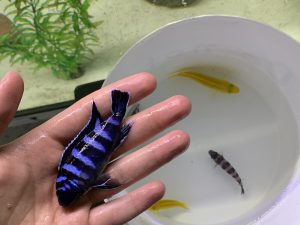As a new year starts and new students are getting the opportunity to become HiLIFE trainees, I have been reflecting about what I did, learned and achieved during my own experience through this program.
I am Adrián Colino Barea, a (now) second year Master’s student of Ecology and Evolutionary Biology. On March 2023, I was lucky enough to join the Integrative Evolutionary Biology (IntEvoBio) lab to answer what I first thought could be a trivial question that popped in my mind. Claudius Kratochwil, the PI of the group, helped me to plan a small project aiming to determine how light depletion determines sexual choice and preference in colorful cichlid fishes from the African Great Lakes. You can learn more about it reading my previous post, by clicking here.

In a nutshell, and if you are wondering, my short internship project didn’t come up with significant differences of mate preference under light and dark conditions. I did not find out how colorful fish fall in love in the dark. Instead, I found out how usual — and important — it is to not have results in science. It is crucial to get a glimpse on what questions are relevant to answer, and what research lines are worth following and investing on. There is just so much to find out, trial-and-error is necessary to keep going.
I learned new limits of the beauty of commitment. For my experiments, controlling fish schedules involved feeding them, and I decided to take care of it. I found myself showing up in the fish room every single day, sometimes in breaks between classes, sometimes during lazy Sundays, sometimes under absolutely crazy weather… And I loved it. Working March to June, I got to experience the Finnish weather every day at least for a bit. It was not too special at the moment, and anyone could do it if living in Helsinki. But now I am really glad I got to see how the seasons change. Very often, I stopped by the fish room only to go walking in the forest or birdwatching later, and experiencing nature changing with the seasons before my very eyes. Days became longer, snow melt, flowers sprung, everything sprung. And this experience is just so different to what I grew into, coming from the other side of the continent.
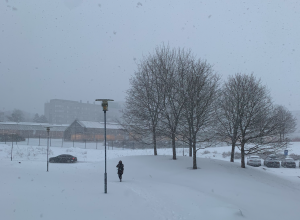
I also found myself becoming part of a community, formed by all the members of IntEvoBio lab. Over my working weeks, it was easy to be motivated to plan and act thanks to the great support and hospitality of all the members of the lab. I always felt encouraged to keep up and be up to date on meetings, presentations, and the deadlines I kept setting myself to meet ends — something vital in such a small project. Indeed, perfecting the art of managing time has been one of the most valuable assets I got out of the internship. But in this case, considering the inspiring time planning the whole lab follows, being organized myself was a piece of cake.
Another thing I learned and cherish is the value of kindness and humanity. During my internship, I always found a smile and willingness to help of the members of the lab I treated with, including people of all levels, from PI to Master’s students. Without this help, my project wouldn’t have developed after the very first stage. I received life-changing lessons on how to build my research career without falling into mistakes others fell into in the past. I learned how important it is to build and take care of relationships, as we got to welcome incoming researchers from distant countries and prepared the departure of some of IntEvoBio staff to other universities abroad. This is the spirit of the science of today: learning by sharing.
Although almost no one in the lab was a Finn during my stay, the spirit of properly balancing work and life was a rule throughout my internship, and I feel this is also part of the kindness and humanity I experienced. I felt welcome not only by having a cozy desk with plenty of lovely pictures and catchy fish jokes hung on the wall. I also loved lab outings. To wrap up the work of months, give farewell to a visiting researcher and say hello to summer, we went all together kayaking the Vanhankaupunginlahti in a hot day of June, right before the end of my internship, and then stayed for dinner. We really had a blast. And although few of this has to do with how fishes mate in the dark, it proved vital for the development of this project which tried to answer that question.
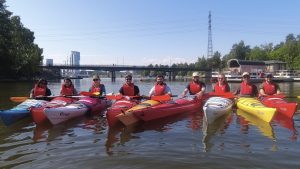
As the proverb says, ‘Give a man a fish and you’ll feed him for a day; teach a man to fish and you’ll feed him for a lifetime’. Thanks IntEvoBio and thanks HiLIFE for helping me so much on my journey to learn how to fish.

